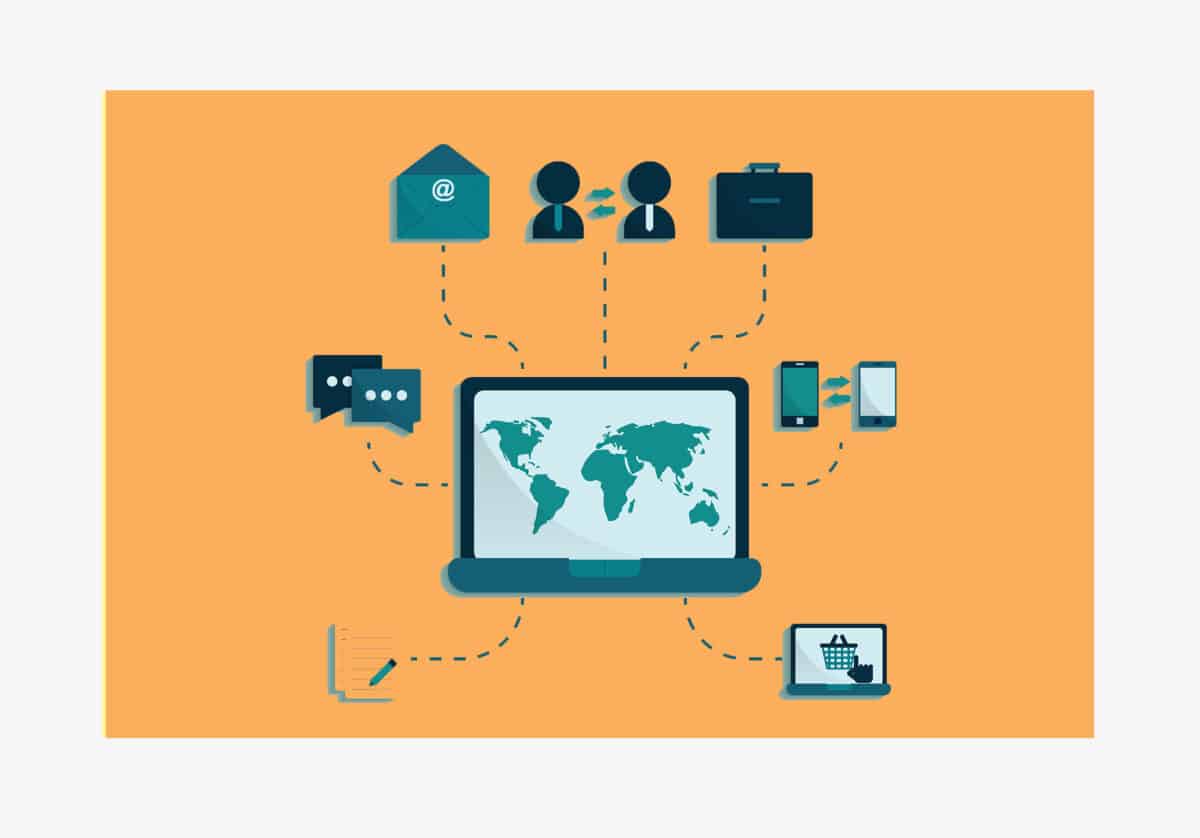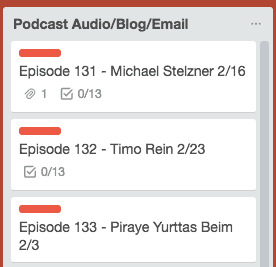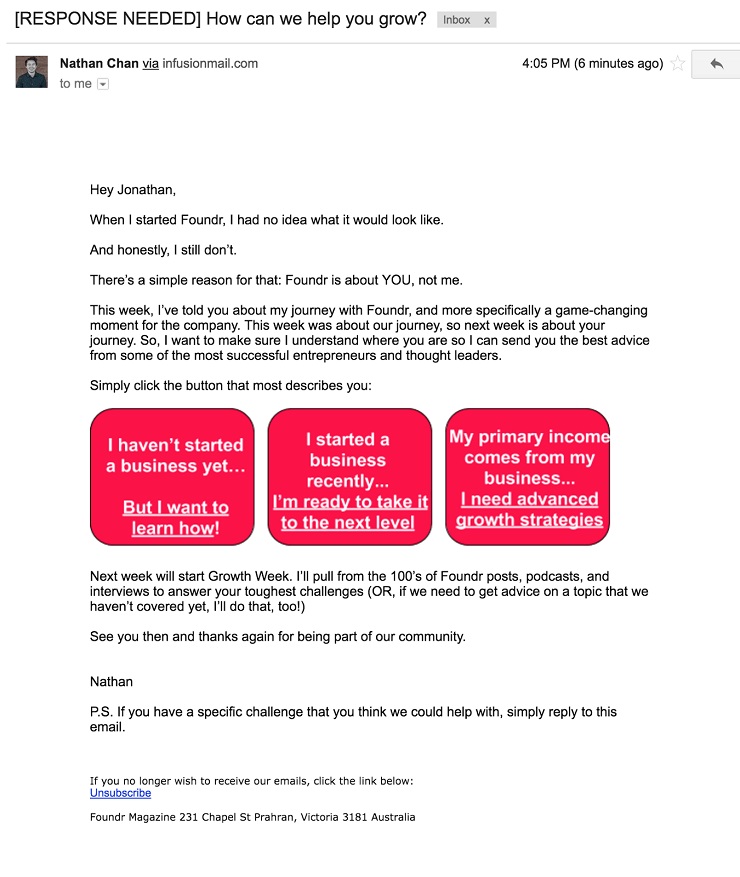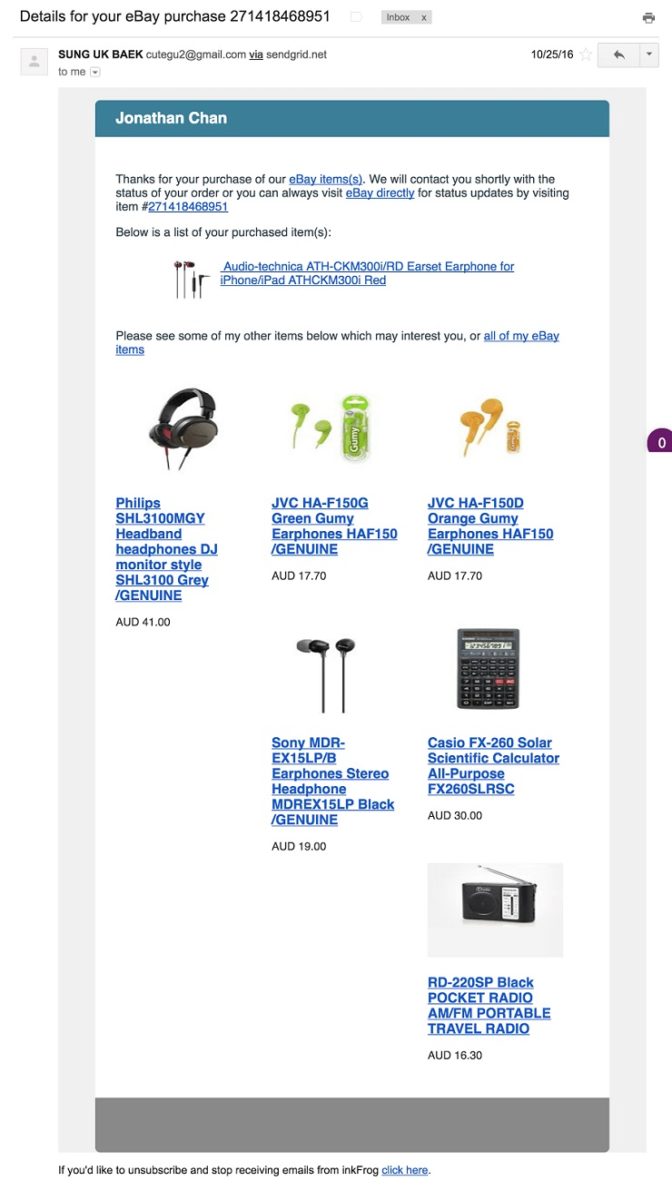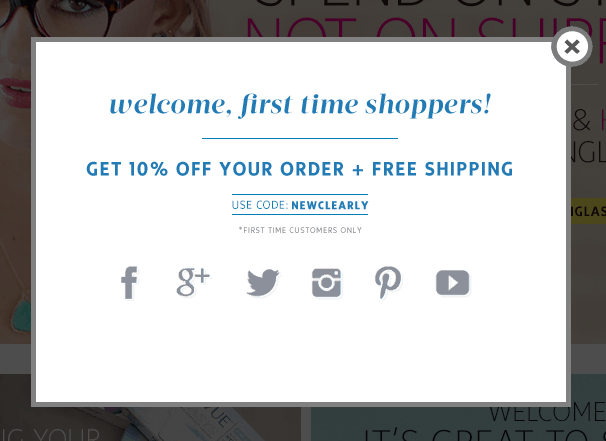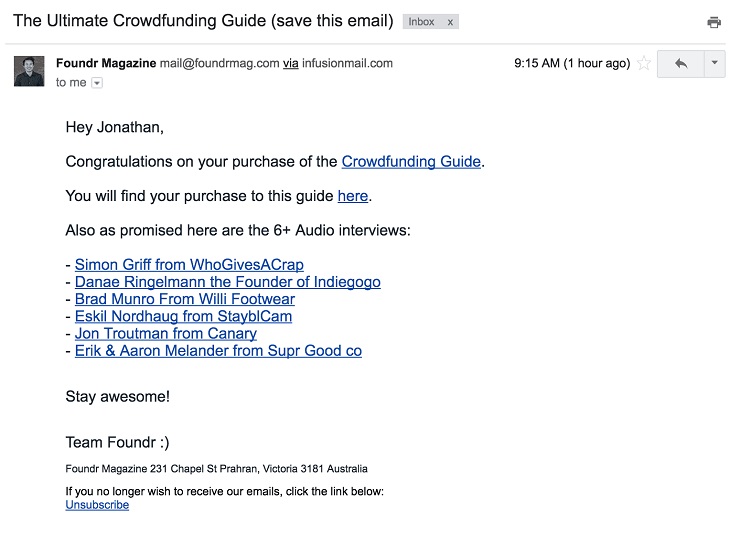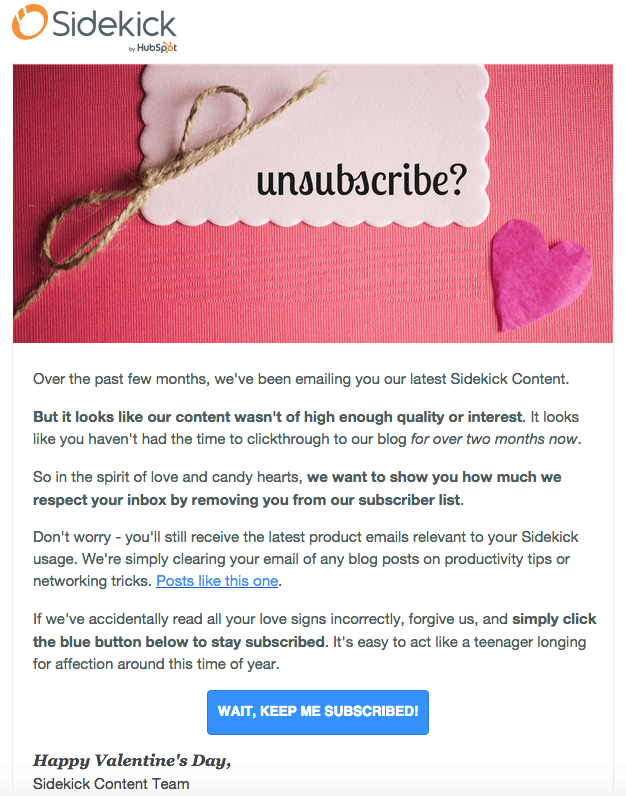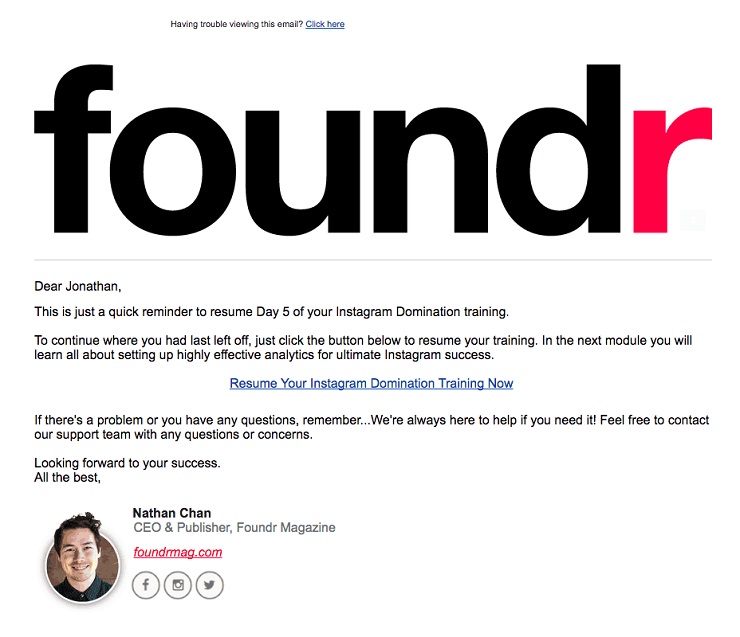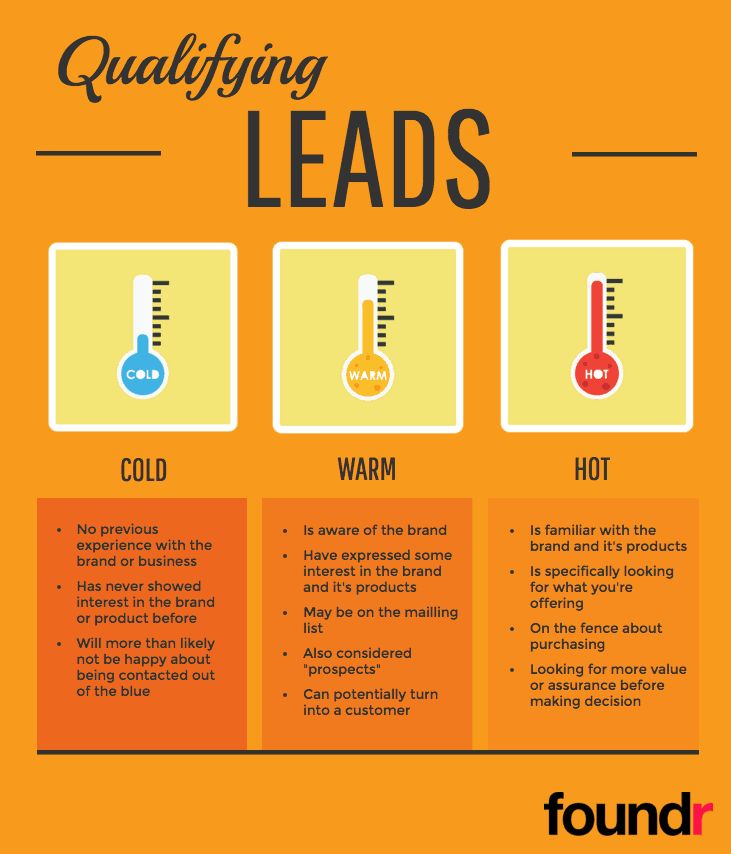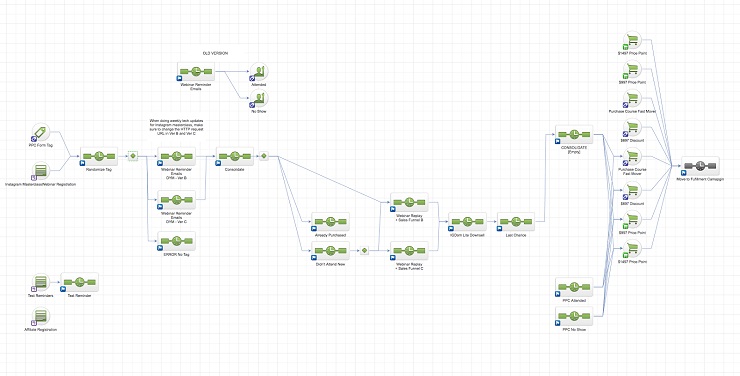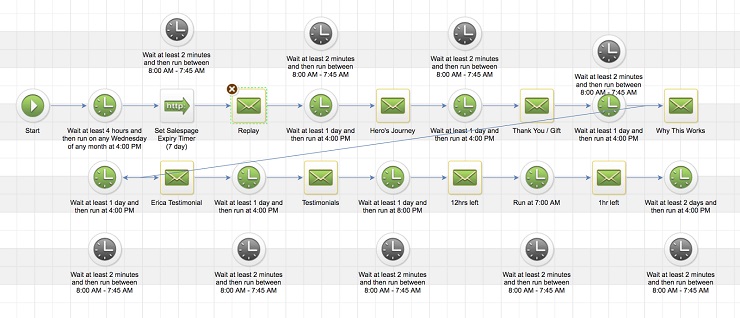Email marketing is one of the most powerful tools in any marketer’s toolbox. With the power of email alone you can grow and nurture leads for your business, improve the level of engagement with your brand, and increase your overall number of sales and conversions.
For any business, regardless of size or niche, a strong email list has the potential to be the cornerstone of your growth strategy—if it’s used correctly.
This is where email automation comes in. By using the right email automation software and creating the right email marketing campaigns, you can grow your business effectively without touching a single thing! In fact, one of the major drivers of our own success at Foundr has been using Infusionsoft to build our own automated email marketing campaigns.
Taking your email game a notch up to the automation level can be a little intimidating, but don’t worry, we’re here for you. If you’re a little unsure about where to start when it comes to email automation, or just happen to be curious about how we handle our own email lists at Foundr, we’re about to take you behind the scenes.
Here are five examples of how we use automated emails to build our business.
Click HERE to get more out of your email marketing
Content Updates
Here at Foundr, every time we publish a feature article or podcast, we always let our email list know.
Chances are, the majority of you reading this article have come from the weekly emails we send out letting you know that a new article has been published on the Foundr Blog. To all the rest, great to have you here!
Hello there! (And check out that nice, shiny subscribe link up top)
Not only is email a great way of driving traffic to your site and to your latest piece of content, but it’s also a great way of constantly giving value to your audience. It makes you far more likely to stand out in a crowded inbox and increase your audience’s trust and loyalty with your brand.
When you cultivate your audience with great content, you’ll find that they’re 50% more likely to become customers, and 119% more likely to read all future emails you send out.
If your business has a blog, or a podcast, or releases any kind of content on a regular basis then you need start letting your audience know. Even better, though, when it comes to building your first automated email campaign, nothing is easier than setting up a regular content update.
In fact this is what our looks like at Foundr:
As you can see, it’s an incredibly easy sequence, but it helps me out a lot more than you’d think. By having this automated email campaign in place, I can be certain that every Monday at 11:30pm AEST (I’m based in Melbourne) an email will go out to the whole Foundr list, letting them know that our latest article just went live.
It means that I don’t have to worry about whether or not it’s going out at the right time, if it’s going out to the right people, or if the sender is right or wrong, because all of that it already setup in the email template.
In fact, the only thing I have to worry about is making sure that the copy of each email that’s going out is correct and that the links are all working.
The whole process is even easier if you have a have a tight editorial calendar and know exactly what piece of content is going out when.
Take for example our podcast schedule. At all times we make sure to know, at the very least, when the next three episodes are going out and on what dates. This way I can create the email copy weeks in advance and just load it into our email sequence and not have to worry about it.
Welcome Series
One of the greatest things about automating your emails is that you don’t have to worry about following up with each and every single person on your mailing list. Instead, you can create speific email campaigns that only activate depending on what actions someone takes.
A very easy example of this, and one that most of you are probably familiar with, is the welcome email.
Welcome emails are typically triggered anytime someone signs up for your mailing list, whether they’ve downloaded a lead magnet, purchased a product, or they’re just interested in receiving your updates.
According to My Emma, subscribers who receive a welcome email experience, on average, 33% more long-term engagement with that brand. Welcome emails are your way of making sure that the first interaction someone has with your brand is a positive one.
When it comes to creating the perfect welcome email, you have to figure out what you want that first interaction with your brand to be like.
Maybe a short introduction about what your brand’s all about and what your mission is? A special product offer for those who just signed up? Or maybe just directing them to your most popular blog posts or content?
For inspiration, take a look at this solid welcome email from Backcountry.
They do an excellent job of mixing in compelling visuals that link back to their Instagram page, and multiple calls-to-action that lead either to their store, their team, or a page detailing their history. It’s a great welcome email that accounts for every potential course of action a new subscriber would like to take.
But don’t think that your welcome sequence has to end at one email. In order to really make your new subscriber feel connected, you can create a whole campaign with multiple emails automatically going out over the course of couple of weeks, or even a whole month.
At Foundr, we send around five emails over the course of one week, with each email serving a different purpose.
For example, the first email you’ll receive when signing up to our mailing list is this:
As you can see, we make sure to immediately provide value for our audience by showing seven great Richard Branson quotes based on our interview with him, along with a little backstory about what Foundr is all about.
We continue providing even more value to each new subscriber with our next few emails revealing how we pitched and landed an interview with Richard Branson, and a bit more about the brand. The sequence ends with an email asking the subscriber to let us know their experience level.
Not only does this give us invaluable data as to what the Foundr audience looks like, but it also helps us segment our list so we know exactly what to send our audience. We can then be sure that all subsequent emails are as relevant as possible, depending on their circumstances.
The Thank You Email
Another great trigger email to get automated is the simple “thank you” email.
Whenever someone downloads an e-book of yours, registers for a webinar, or purchases a product, sending a personalized email is a fantastic way to build up that extra bit of engagement with your brand.
More than just simply being the polite thing to do, saying the words “thank you” is absolutely vital if you’re looking to build a longstanding relationship with someone. By not only acknowledging but actually expressing gratitude towards someone, you can drastically increase their level of emotional attachment towards your brand.
Plus, consider the fact that thank you emails generate four times the open rates and see 300% more transactions and conversions than your average promotional email. The thank you email is clearly a powerful tool that, when used properly, can help you drive even more sales.
Most online retailers already know this, which is why you’ll often find their thank you emails refer you back to their site to continue shopping.
You can see how eBay not only thanks the customer, but also gives product recommendations based on purchase history.
If you don’t feel like doing product recommendations, you can also include a coupon or a discount voucher of some sort. According to Remarkety, using coupon codes not only triples your conversion rate but, on average, one in 10 coupon codes will be used to make a future purchase.
Beyond just using your thank you emails to sell more products, you can also create an automated email campaign designed to up-sell and generate more revenue.
Something you’ll notice with all of our digital products, whether it’s our crowdfunding guide or our free e-books, is that we always deliver them via email. They’re never available for direct download from the site.
The reason behind this is because we want to reinforce certain expectations of our audience. By making these downloads available only by email, we’re making it so that our audience will come to expect nothing but value from our emails.
If our email ends up in the spam or promotions folder for some reason, then it gives the recipient a reason to mark all of our emails as non-spam, to avoid missing something valuable. This makes it so that all our future emails are actually getting through to their inbox.
Reminders, Reactivation, and Re-engagement
Once someone purchases a product from you or joins your mailing list, that doesn’t mean that your job is done and you can cool it with your email marketing. One of your primary goals with email automation isn’t to build a business through new customers, but to retain your existing ones as well.
It costs 10 times more to acquire a new customer than it does to sell to a pre-existing one. Furthermore, statistics show that a 5% increase in customer retention can increase a company’s profitability by 75%.
It really is a no-brainer that you should be creating an email sequence specifically designed keep your customers around and engaged.
Whether it’s to remind your audience that their coupon code is expiring, or reaching out because they haven’t used your service in a while, these emails are designed to remind your audience that you exist and ensures that you stay in their minds.
While you’re not going to be able to win everyone back, you’re far better off having a small list filled with people who regularly engage with your brand, as opposed to having a large list where the majority of your subscribers don’t care about what you’re doing.
Depending on what email automation software you’re using, you should be able to track whether someone is opening your emails. If someone hasn’t opened your emails in the past few months, you can set up an automated re-engagement process.
It doesn’t have to be anything overly complicated, just a simple email like what Hubspot did with their Sidekick can be great.
It’s not pushy or overbearing, it just notes that you haven’t been opening their emails lately and that they’ll remove you from their list.
What I like about this email is that it includes a gentle reminder about what kind of content they’ll be missing if they unsubscribe. That’s complete with a big call-to-action encouraging them to stay on the mailing list. It’s simple, yet effective.
At Foundr, we typically only use these emails as a way to improve the engagement people have with our products. For example, anyone taking our Instagram Domination course will go through an automated email campaign that looks like this:
All it does is automatically track each student’s progress and whether or not they’re going through the course. If they haven’t accessed the course in 72 hours, we’ll automatically send them an email reminding them to resume their training.
It’s an incredibly easy process to set up, and in doing so, we’ve managed to scale our process for not only acquiring new customers, but also making sure that we retain our existing ones.
Click HERE to get more out of your email marketing
Nurture Series
Not everyone is going to be ready to buy immediately. It’s just not going to happen, and that’s fine. No matter how good of a marketer you may be, it’s literally impossible to net a 100% success rate. Heck even having a 10% success rate is considered amazing in the marketing world.
It’s not because you’re bad at your job or that your potential customer isn’t feeling your pitch. The simple fact is that they’re just not ready to purchase at this specific moment.
That could be because they need to talk to their business partner a bit more, don’t have the funds at the moment, or they just don’t need that particular product right now. You have to remember that there’s a whole variety of reasons out there preventing you from making a sale.
But just because someone isn’t interested in purchasing right now doesn’t necessarily mean that they won’t be interested later. What you need to do now is continue to nurture that lead until they’re ready to buy.
Nurturing a lead is a lot like baking a flan. Getting the best result takes some time and patience, and you’ve got to make sure that you’re using the right methods in the right order.
Eventually turning a warm lead into a hot lead by preheating your oven to 180 degrees celsius, caramelizing your sugar in a medium saucepan…and this analogy has officially gone off the rails.
A major reason an email list is such a valuable resource is the fact that it’s the perfect channel to qualify and nurture your leads.
With email, you’re able to talk directly to your audience and be much more personal. As long as you’re not sending continuous spam, you can use email as a way to continuously provide value to your audience, stay at the top of their mind, and foster a stronger relationship.
At Foundr, one of our best email automation campaigns involves our weekly Instagram Domination masterclass.
This email campaign is designed to make sure that we’re able to make as many sales as possible, and all on autopilot. With this campaign, we’ve carefully set it up so that, depending on what action our lead takes, we send the appropriate email that makes sure they stay in our sales funnel.
For example, we’ve set it up so that the email campaign we send someone depends on whether or not they attended the webinar. Those who attended the masterclass and didn’t purchase at the end will be put through something like this:
We send out eight emails over the course of five days and, just like our welcome series, each email is designed to provide value and further nurture that lead. Within that sequence we have an email providing testimonials about Instagram Domination, another answering any objections, and one explaining Foundr’s story with Instagram.
Most of these emails end with a call-to-action for the recipient to join the Instagram Domination community.
Using automation, every step of the way we are nurturing our leads by providing value and gently encouraging them to join Instagram Domination. The result is a completely automated sales process that helps us grow our business, all through the power of email.
Conclusion
One of the most difficult things about being an entrepreneur is the fact that your business is intricately tied to how much time and energy you have. As soon as you go offline, so does your business. Which is exactly why creating automated marketing campaigns is so important for anyone looking to seriously grow their business.
Automated email marketing campaigns is by far one of the best strategies anyone can start immediately using. Email marketing doesn’t have to be scary or complicated. When used in the right way and you’ll find that you can double the growth of your business while you sleep!
Do you have any email marketing campaigns that you use? What emails can you start automating right now? Join the discussion in the comments below!
